Proud of Vietnam’s XCB-01 Infantry Fighting Vehicle
At the Vietnam International Defense Exhibition 2024, the presence of the XCB-01 – an infantry fighting vehicle researched and manufactured by Vietnam – became the center of attention, reflecting our country’s solid advancement in defense capabilities.
Not only was the XCB-01 introduced for the first time at the exhibition, but it also participated in the 12th Army Corps’ drill in late 2023. It is currently being produced at the Z189 Shipyard in Haiphong.
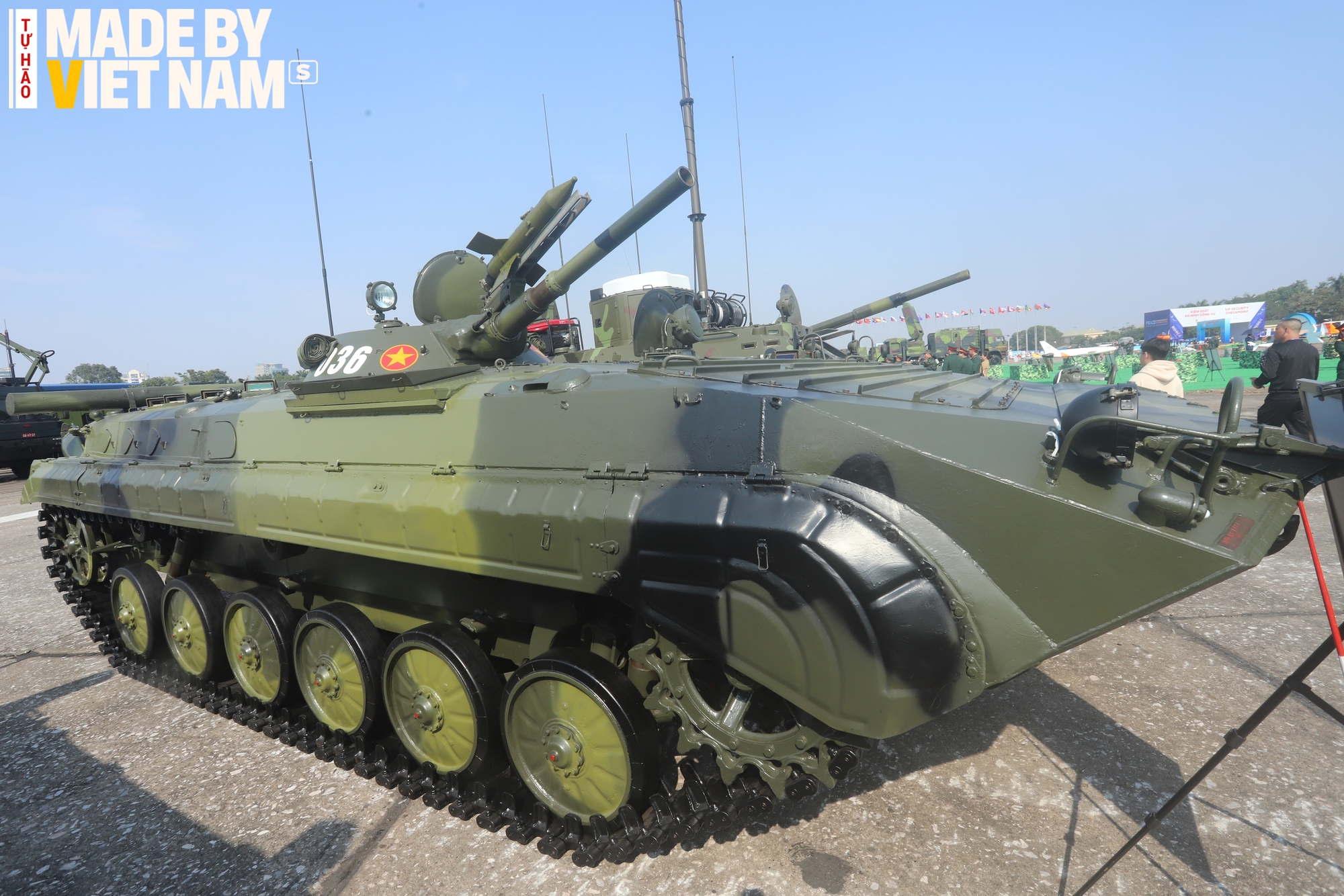
XCB-01 on display at the Vietnam International Defense Exhibition 2024. Photo: Thien Son
This vehicle marks the beginning of the domestic production of tracked armored vehicles, weighing approximately 15 tons. It incorporates modern technical features with a length of 6.95m, a width of 3.25m, and a height of 2.14m, excluding the elevation of the main gun.
Equipped with a flexible track mechanism and a three-person crew, the XCB-01 also boasts an advanced laser sensor system, enabling quick detection and response to threats from artillery, missiles, or UAVs.
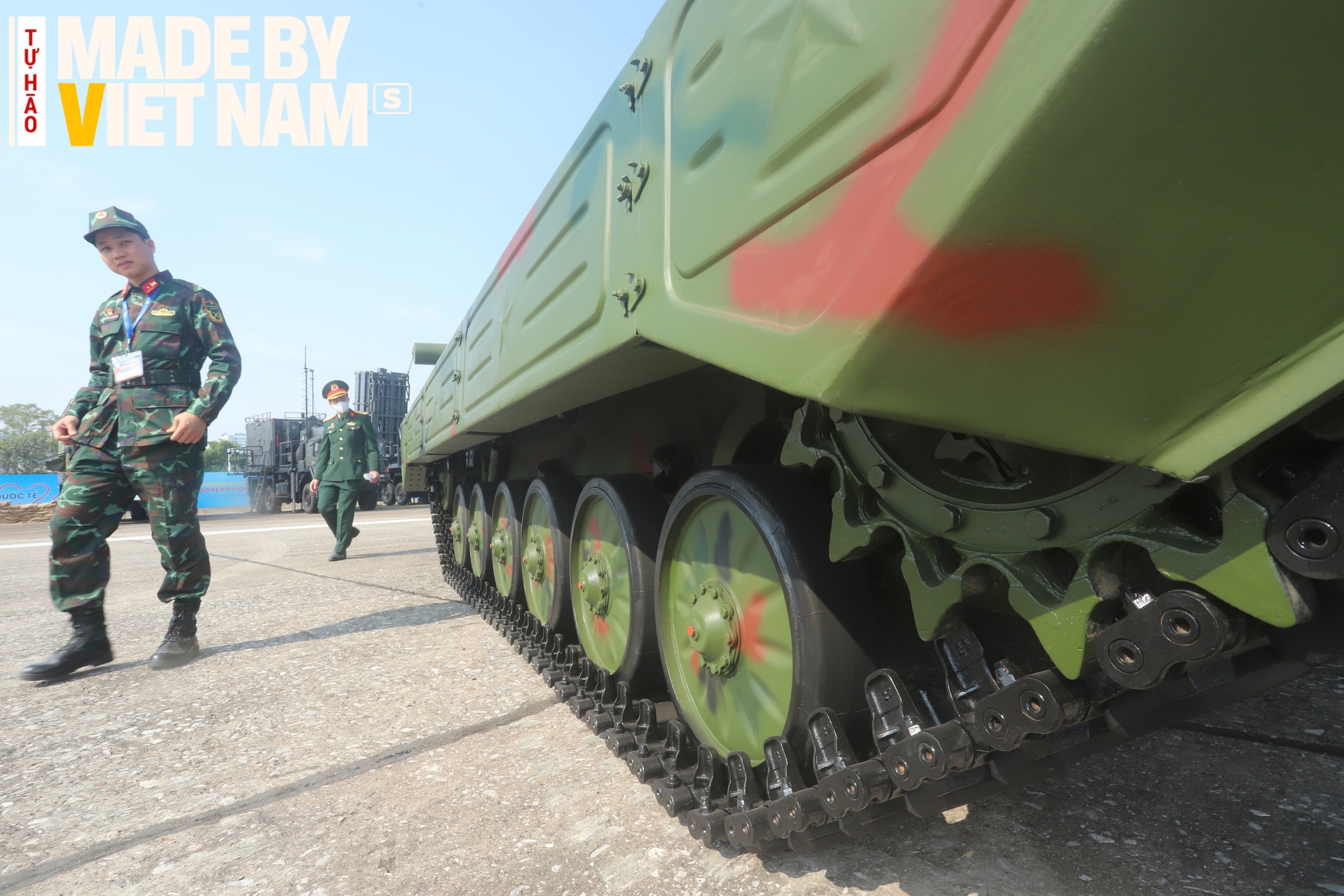
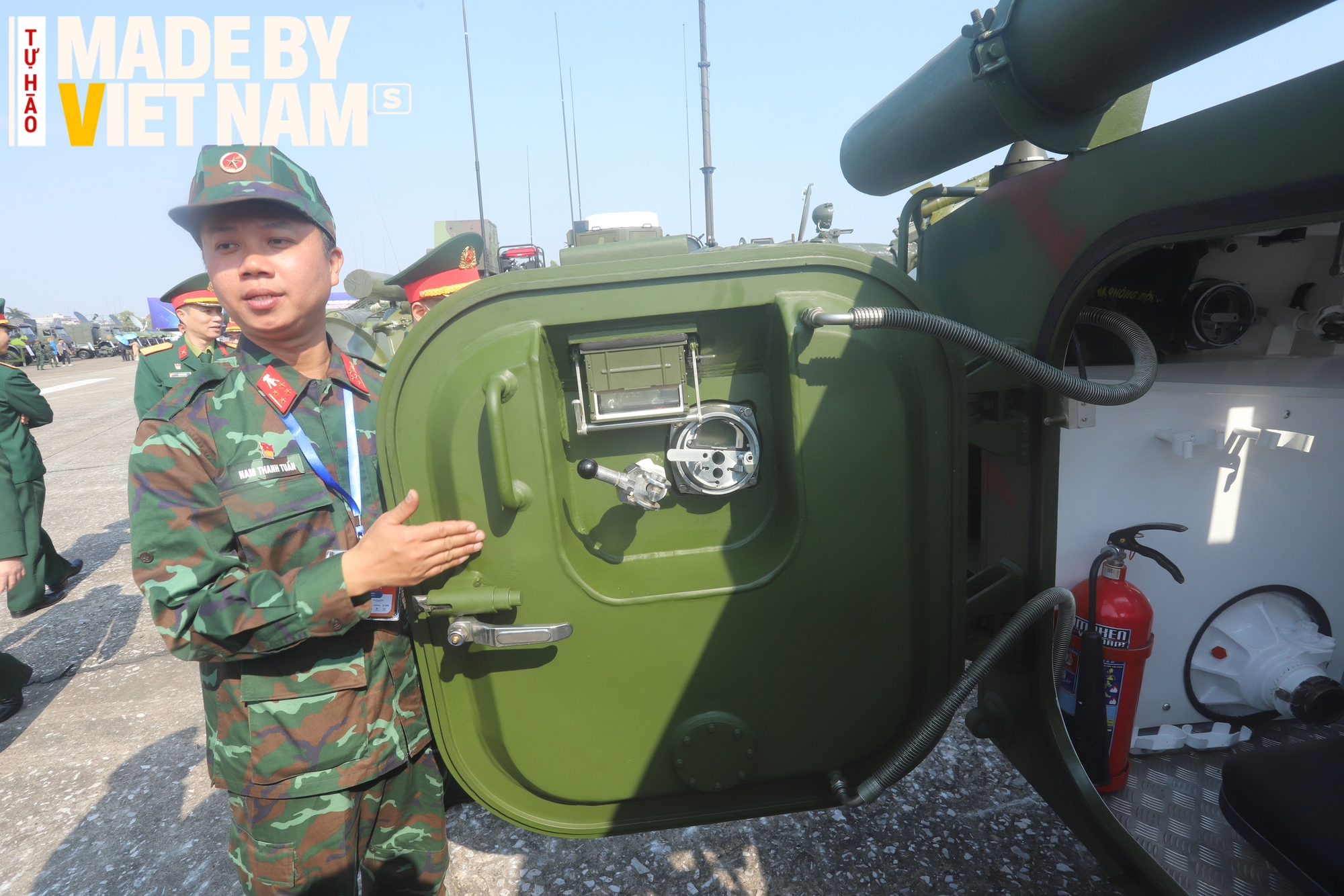
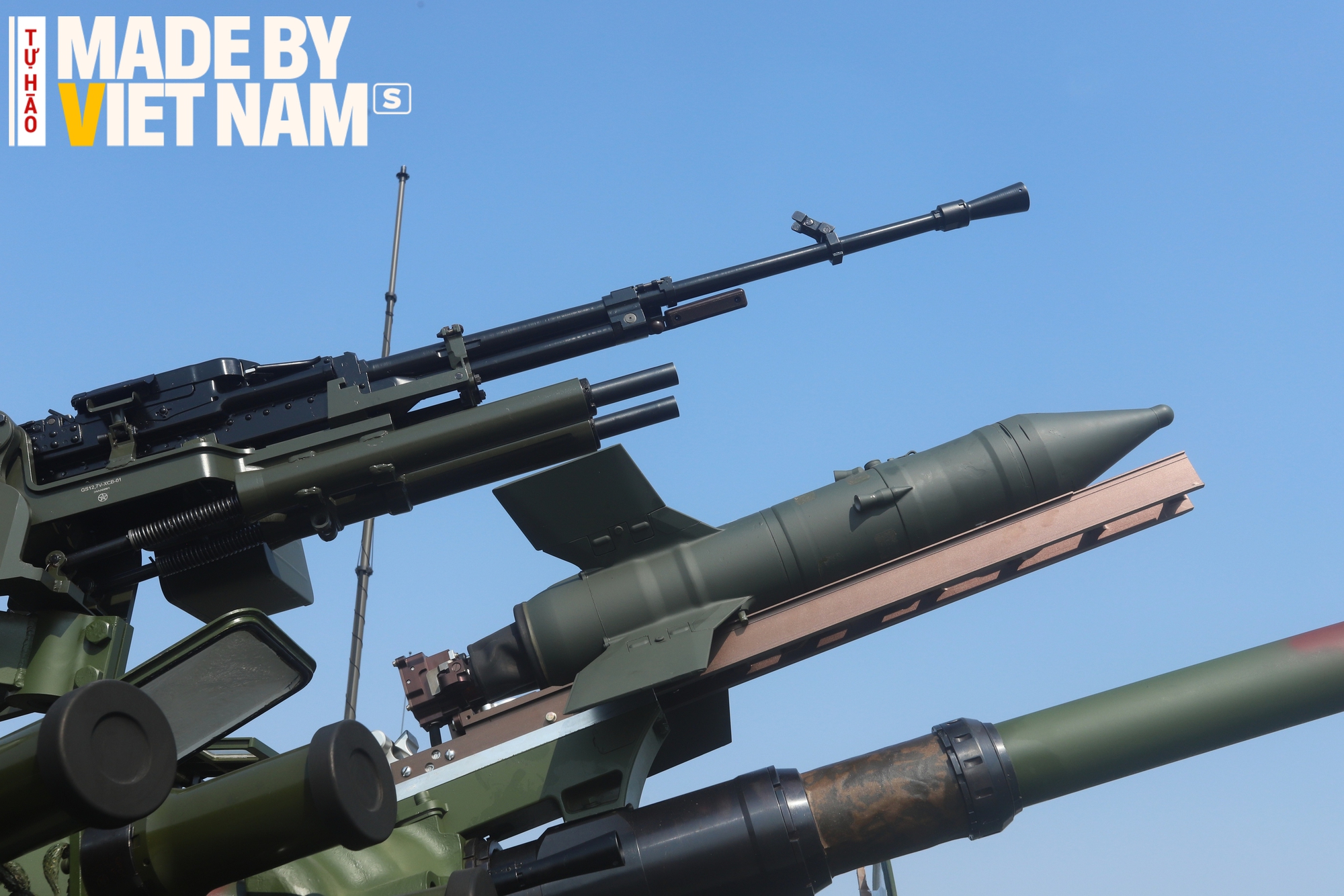
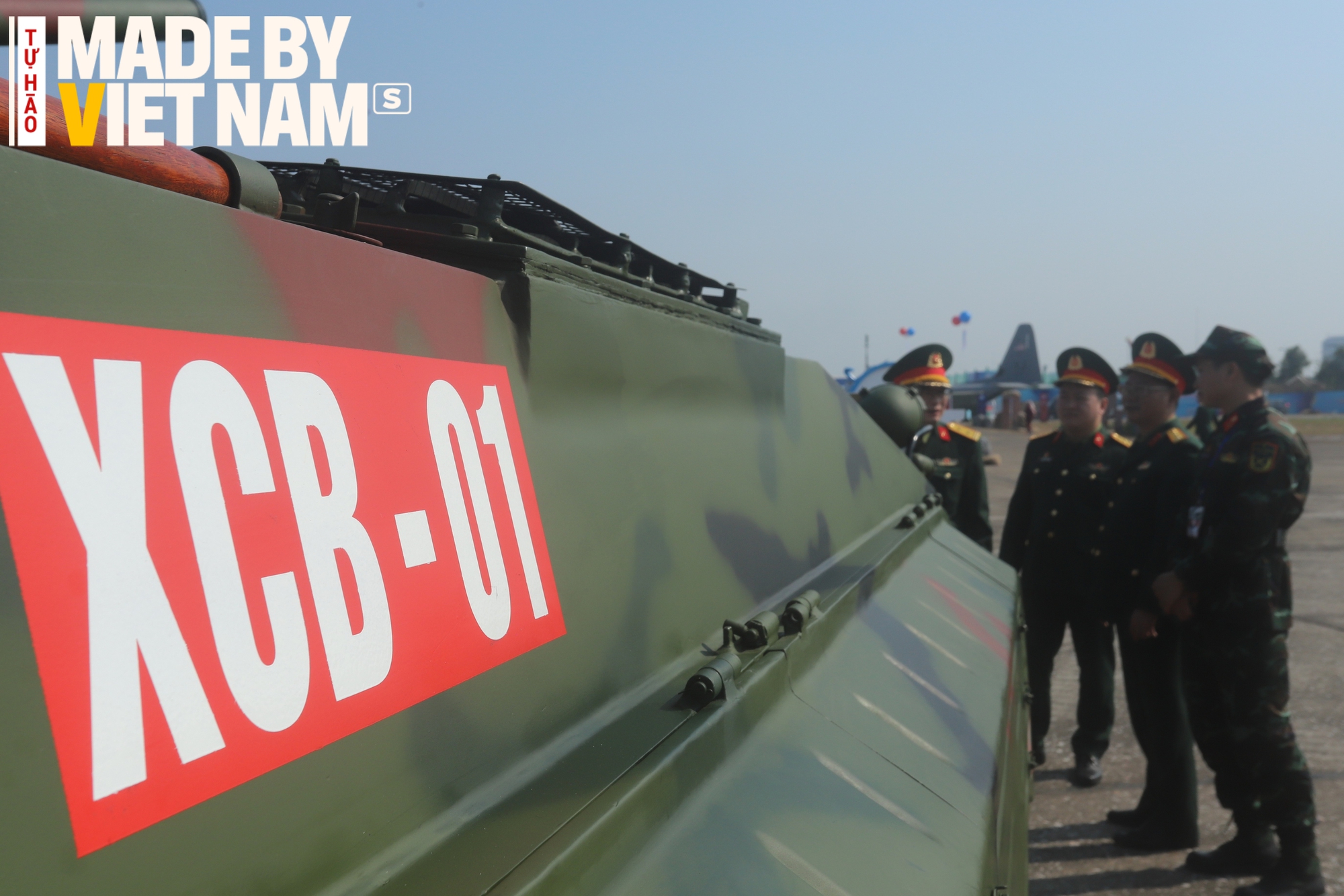
Close-up of XCB-01 details. Photo: Thien Son
With a combat group consisting of a 73mm main gun and a semi-automatic loading system, along with a coaxial machine gun and an anti-aircraft machine gun, the XCB-01 delivers formidable firepower against enemy infantry.
Additionally, its maximum speed of 65 km/h and swimming speed of 7 km/h, coupled with a 300-horsepower diesel engine and a suspension system that can navigate diverse terrain, make the XCB-01 a formidable opponent on the battlefield.
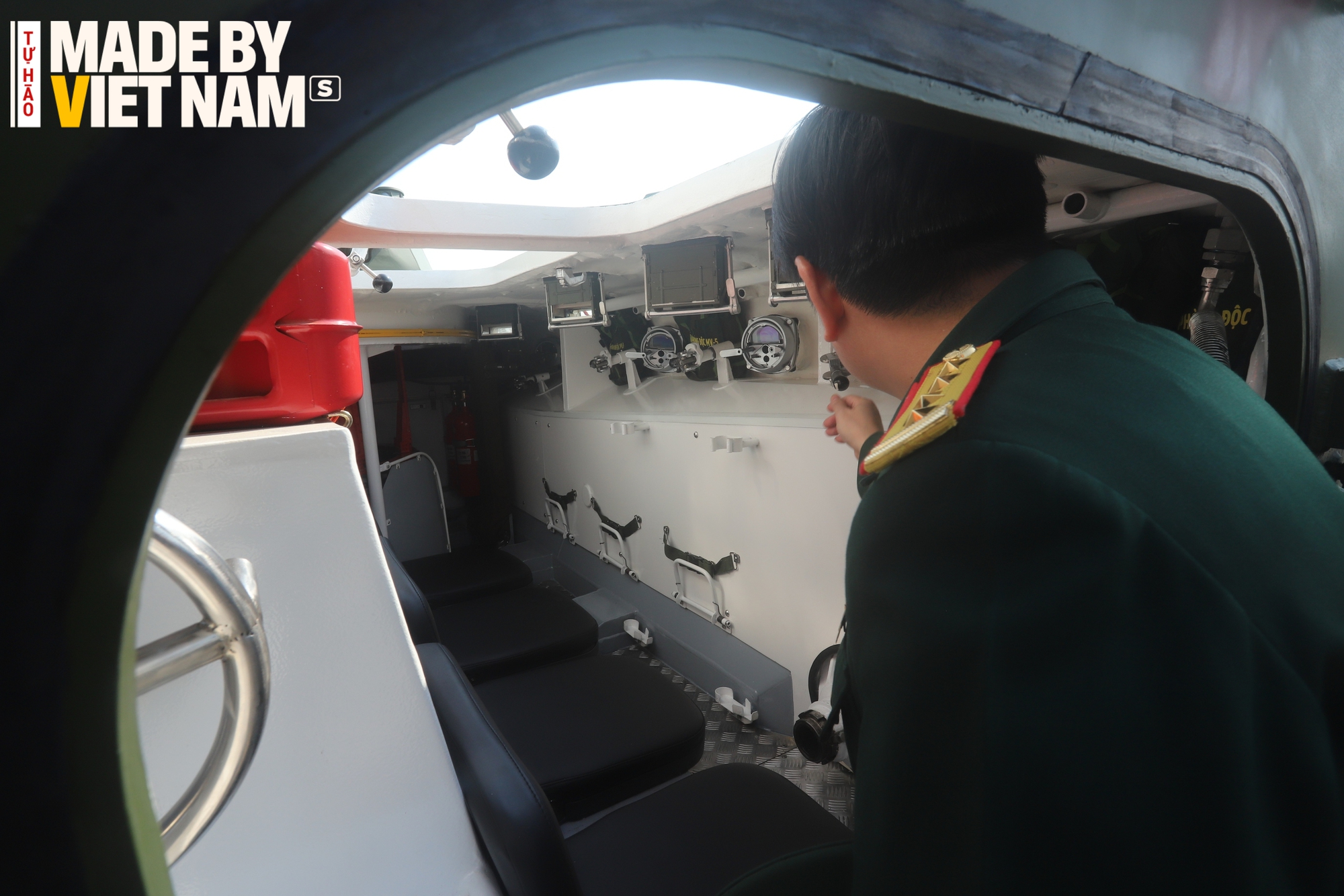
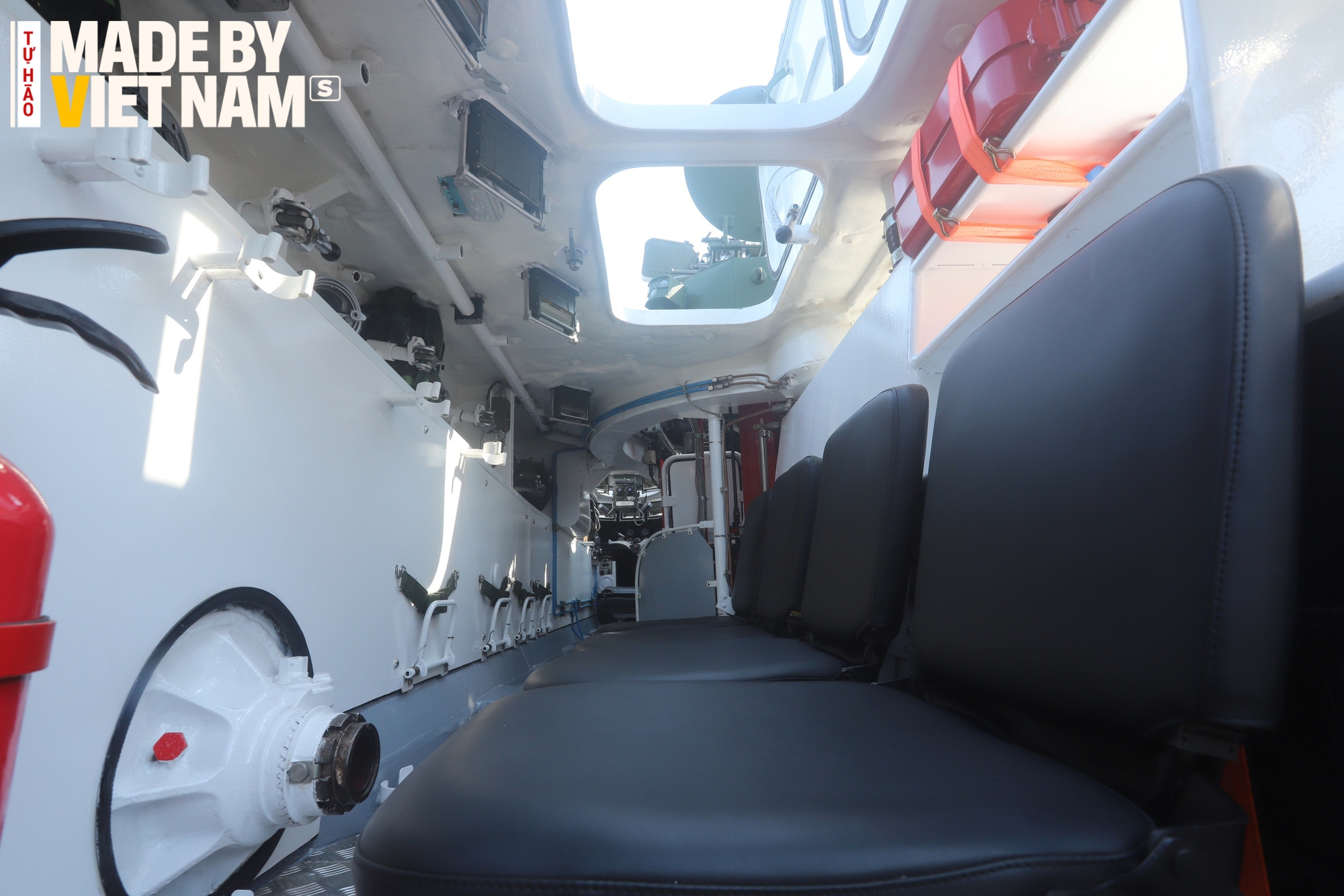
Interior of the XCB-01. Photo: Thien Son
The XCB-01 is also equipped with smoke grenade launchers, ready to create a smokescreen in critical situations, and an integrated air conditioning system, ensuring comfort for the crew and accompanying infantry in Vietnam’s hot and humid climate. The vehicle’s combat group consists of three crew members and eight accompanying infantrymen.
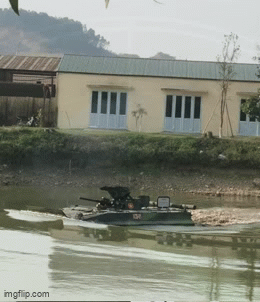
XCB-01 Infantry Fighting Vehicle undergoing swimming trials on a lake. Source: Youtube VIETNAMMILITARY
XCB-01 Rivals the US’s M113 and Russia’s BMP-1
According to Senior Colonel Le Anh Son, Deputy Director of the Technology Management Department (General Department of Defense Industry), in terms of size and weight, the XCB-01 is comparable to the M113 armored personnel carrier of the US and the BMP-1 infantry fighting vehicle of Russia.
When comparing these three vehicles, the XCB-01 holds its ground in the three most important aspects of an armored vehicle: mobility, weaponry, and protection.
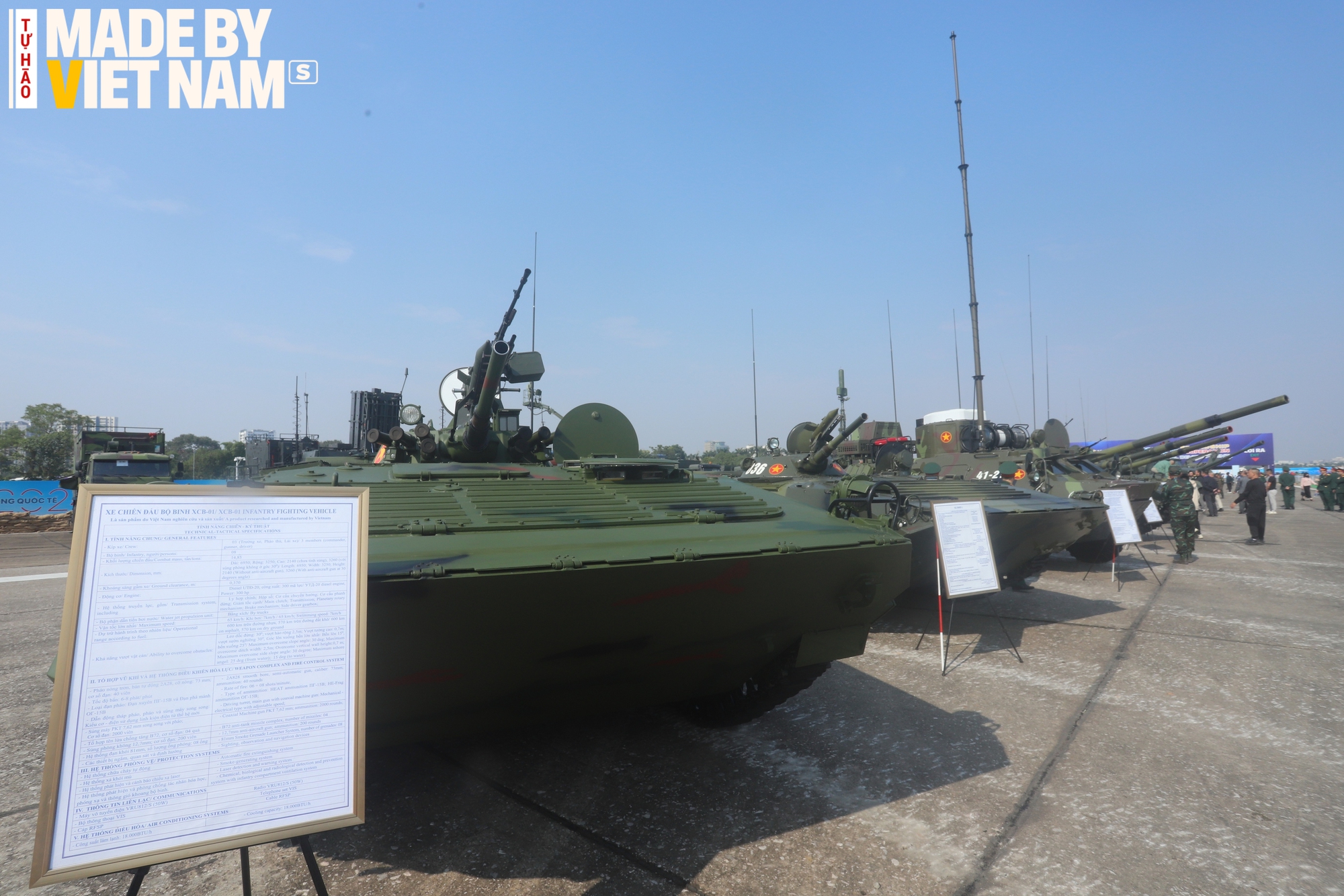
XCB-01 on display at the Vietnam International Defense Exhibition 2024. Photo: Thien Son
The US’s M113 Armored Personnel Carrier
The M113 armored personnel carrier was first produced in the late 1950s, and approximately 80,000 units have been manufactured since then. It is not only used by the US Army but also by nearly 50 other countries and regions worldwide.
In terms of size, the M113 weighs 12.3 tons, with a length of 4.9m, a width of 2.7m, and a height of 2.5m. Its tracks are 38.1cm wide and use 15.24cm-wide gears, with the right track consisting of 64 links and the left track having 63 links.
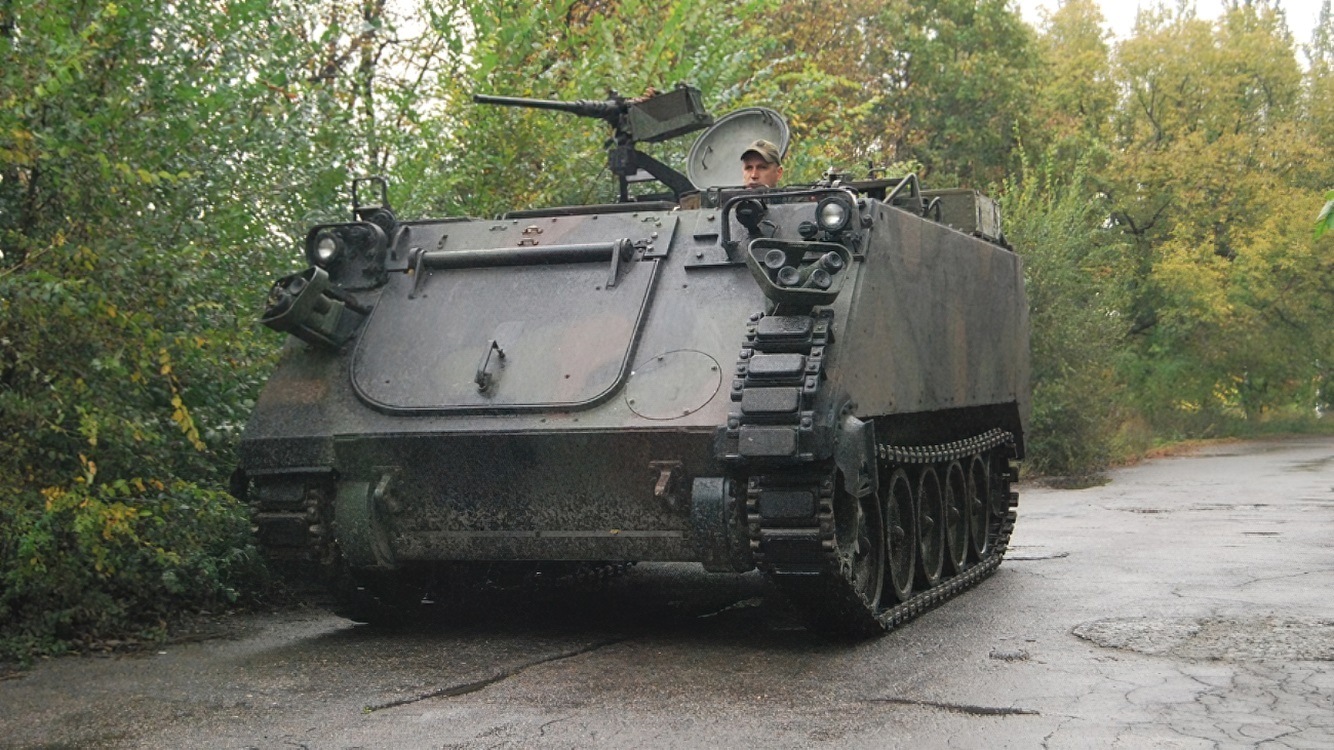
Close-up of the US’s M113. Photo: ArmyInform
Each track link is equipped with a removable rubber pad, enhancing road grip and reducing noise during movement. The average lifespan of the tracks is 4,900km, occasionally reaching up to 14,400km.
The M113 can carry up to 11 military personnel. The driver’s compartment is located on the left front side, with an entrance from the rear. The vehicle commander sits in the middle of the vehicle, while the 10 soldiers can sit facing each other on two benches.
When not carrying troops, these benches can be folded to create an empty space of up to 6.54 cubic meters. A hydraulically operated ramp at the rear of the vehicle, along with another entrance, can be controlled from the driver’s compartment.
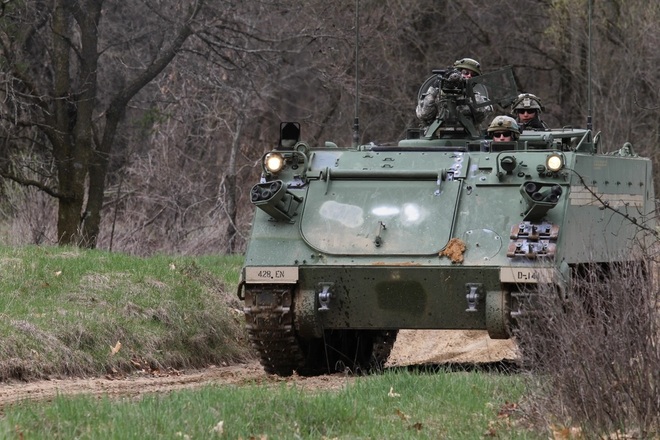
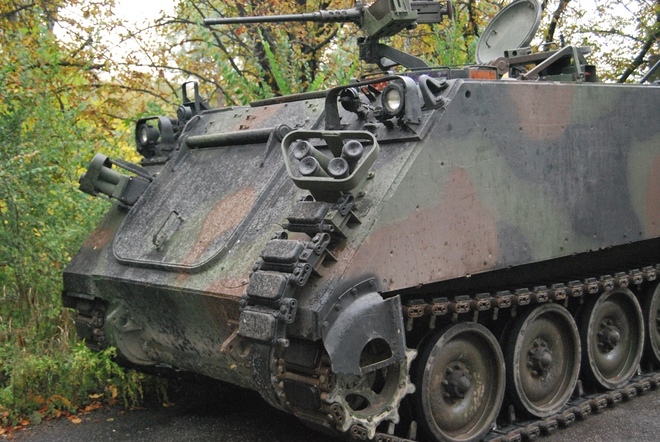
Close-up of the US’s M113. Photo: ArmyInform
The M113 can swim without prior preparation; it only needs to raise the front shield to ensure stability while moving in the water, and the movement of the tracks will propel it forward. This vehicle can be transported by aircraft such as the C-5, C-17, C-130, and C-141.
Its weaponry includes a 12.7mm machine gun with an effective range of up to 1,800m and two 7.62mm medium machine guns that can fire to both sides of the vehicle. The M113 provides military personnel with mobile combat capabilities, allowing them to engage in battles from within the vehicle instead of waiting to reach their destination before joining the fight.
Russia’s BMP-1 Infantry Fighting Vehicle
The BMP-1 infantry fighting vehicle weighs 13 tons and was the first of its kind in the world, produced and deployed by the Soviet Union in 1966.
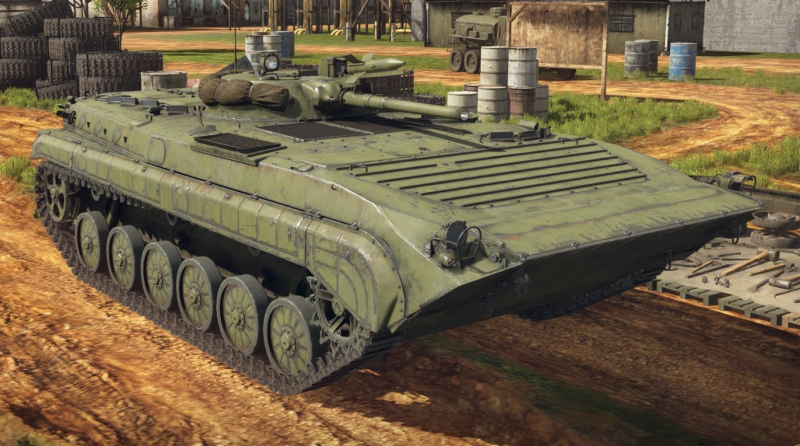
Russia’s BMP-1 Infantry Fighting Vehicle. Photo: TASS
The BMP-1 is protected by a hull made of rolled steel and is equipped with a 73mm main gun, a coaxial 7.62mm machine gun, and the Malyutka anti-tank missile launcher. It can move on water using the propulsion from its tracks.
Powered by a 300-horsepower diesel engine and gearbox, the BMP-1 has the driver’s seat positioned at the front. A unique feature compared to other Soviet-era tracked armored vehicles is its use of a steering wheel instead of a lever for control.
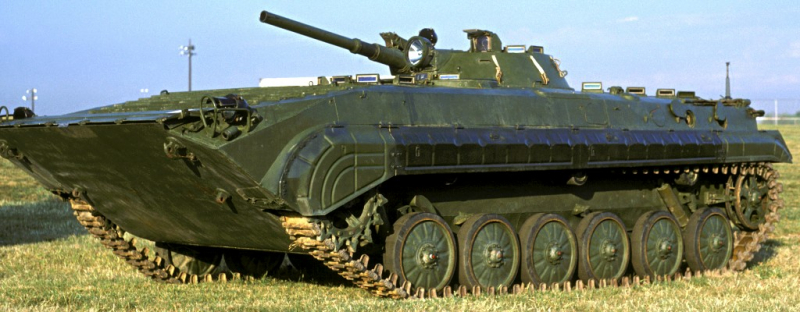
Russia’s BMP-1 Infantry Fighting Vehicle. Photo: TASS
The middle of the vehicle features a small turret housing the vehicle commander and gunner, while the rear section is the troop compartment with a ramp door and space for up to eight soldiers, along with an auxiliary fuel tank.
The troop compartment also has slots for the Strela-2 surface-to-air missile system. The BMP-1 is equipped with a defense system against weapons of mass destruction.
This vehicle was a significant success for the Soviet Union, with over 20,000 units produced from 1966 to 1983, and it demonstrated superior advantages over conventional armored vehicles in combat.
















